Islamic Arts Museum

|
The Islamic
Arts Museum
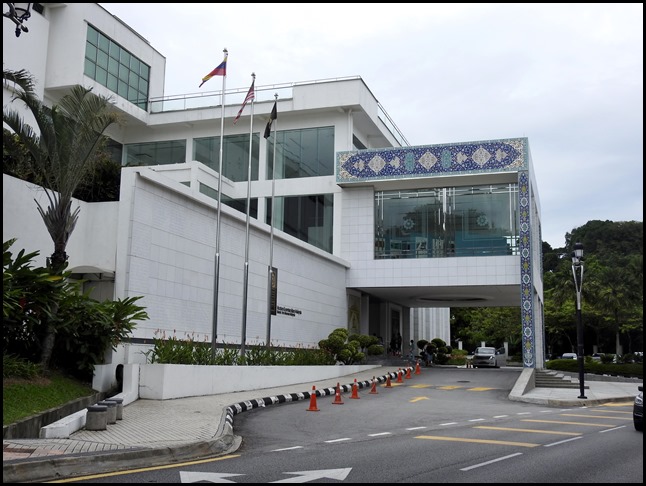 We left the
Hop-On-Hop-Off bus at the the National Mosque and walked the short distance to
the Islamic Arts Museum
Malaysia, We had been highly recommended
this particular museum by the ladies on Manatee. We were already impressed by
the building itself.
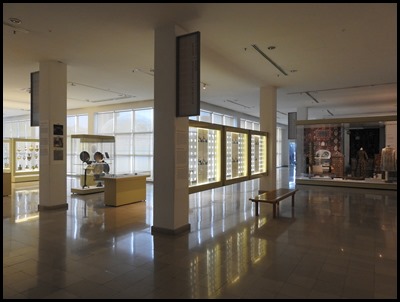 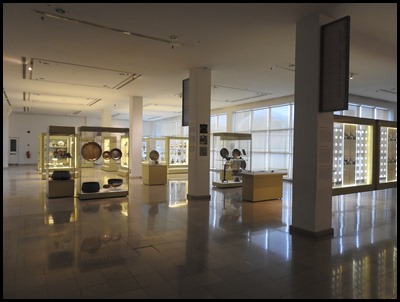 We found a huge space of 30,000
square metres at a perfectly set temperature to enjoy a long bimble around the
9,000 plus artefacts.
The Islamic Arts Museum Malaysia was officially opened on the 12th of December 1998 as a response to the rapid growth of interest in Islamic art. The museum is located in the heart of Kuala Lumpur’s tourist belt amidst the lush greenery of Perdana Botanical Gardens and within walking distance to the National Mosque, Bird Park and National Planetarium. The museum is the largest museum of Islamic arts in South East Asia with more than seven thousands artifacts from the Islamic world. The Islamic Arts Museum has 12 main galleries which is classified according to the types of artefacts spread over level 3 and 4. Level 3 of the museum hosts the Quran and Manuscripts Gallery, the Islamic Architecture Gallery, the India Gallery, the Chinese Gallery, the Ancient Malay World Gallery as well as the reconstructed Ottoman Syrian Room dating back to the 19th Century. Visitors can also proceed upstairs to Level 4 which hosts a display of jewellery, textile, arms and armour, ceramics as well as ancient Islamic glassware.
Time says: Situated in airy white splendor just up the hill from the Modernist National Mosque, visitors might think this place an obligatory nod to the country's dominant faith, funded out of guilt as much as piety. If so, they would be wrong. Thankfully off the beaten path of most tour groups, the museum is a tremendous resource center for Islamic studies and a beautiful showpiece for the best impulses and artisanship that have unified (rather than divided) the Muslim cosmos. The permanent collection, traveling exhibitions and gift shop are all top-flight. Top-flight indeed and aided our need to learn more.
We found a wall display to help with
our learning. The Spread of Islam: “Who is better in speech than
one who calls (men) to God, works righteousness and says, ‘I am of those who bow
in Islam’?” Surah Fussilat, verse 33.
Within decades of the
death of the Prophet Muhammad, Islam had reached Asia, Africa and Europe. The
early Islamic conquests during the Umayyad and Abbasid dynasties spread the
monotheistic message to new lands. Conversions were not obligatory, and many
Christians and Jews retained their religion. The Holy Qur’an states clearly in
Surah 2:256 “Let there be no compulsion in religion”. Non-Muslims were requested
to pay the Jizia, a tax which secured them full protection by the state. Vast
numbers embraced Islam.
Islam had widespread appeal because
of its clear, just and fair message. It calls for belief in one God and that all
men are equal. It is their deeds that elevate them in status. Waves of
conversions came with the empires in Anatolia and Persia accepting Islam as
their official religion. Furthermore, the message of Islam spread through
travellers and merchants to Africa, Southeast Asia and China. Islam respected
bygone cultures and civilisations, incorporating their heritage and wisdom and
building on them. At the same time it put much emphasis on scholarship and the
spread of knowledge.
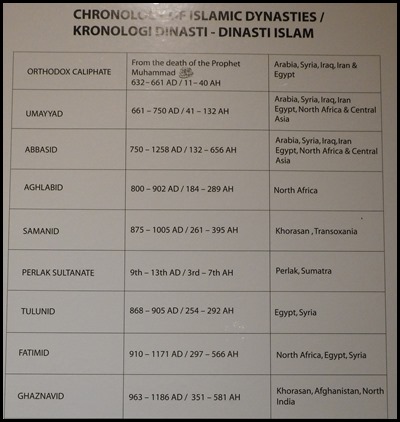 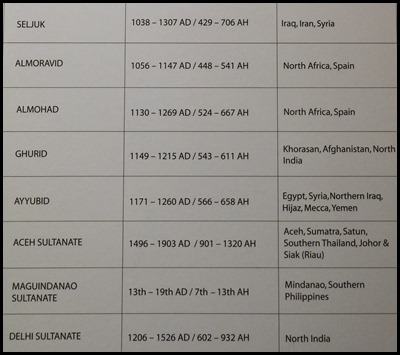 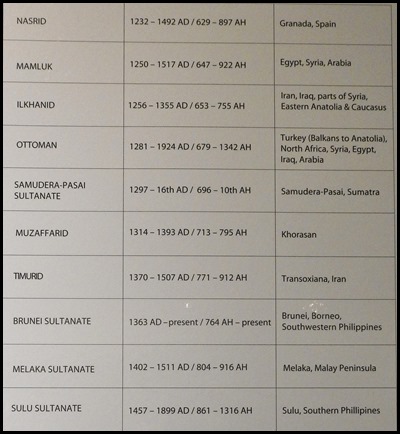 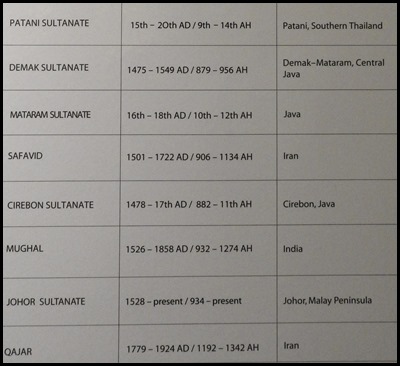 Fascinating to see the Chronology of Islamic Dynasties.
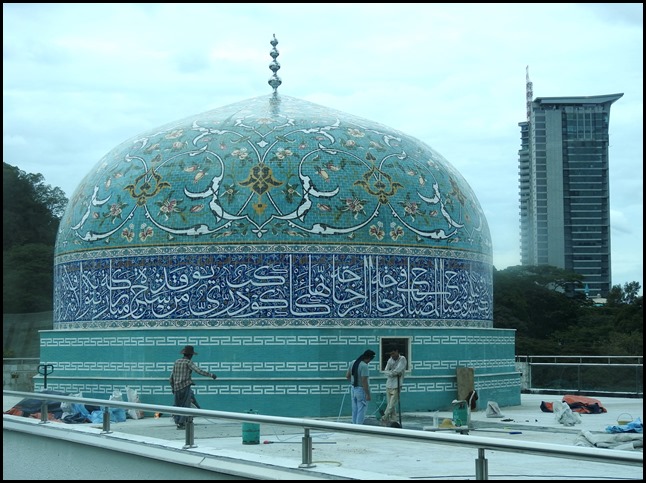 We peeked out at the beautiful roof
dome, currently undergoing some TLC.
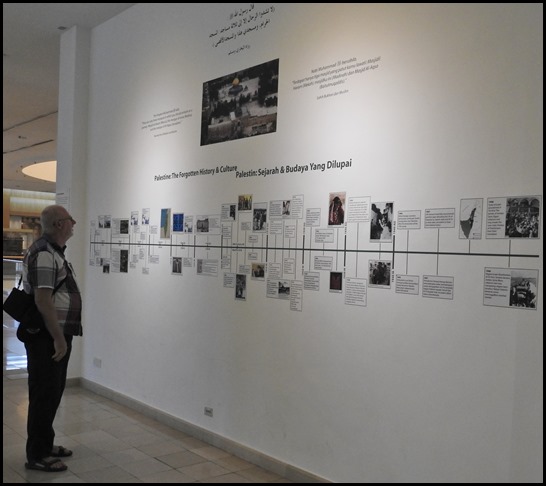 This wall display was called Palestine Remembered.
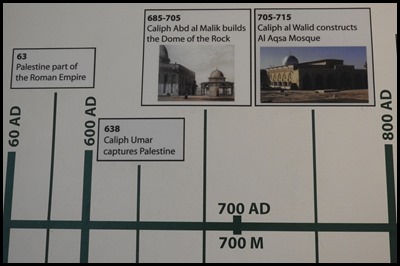 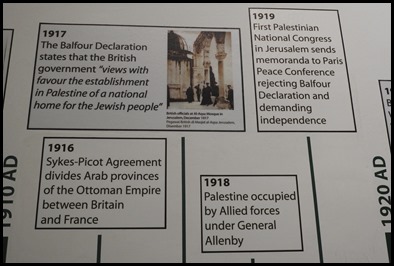 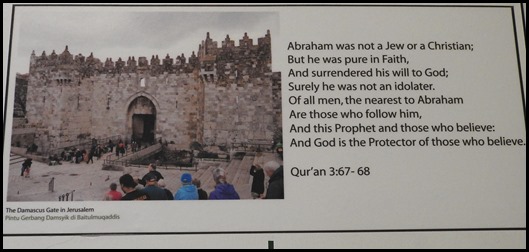 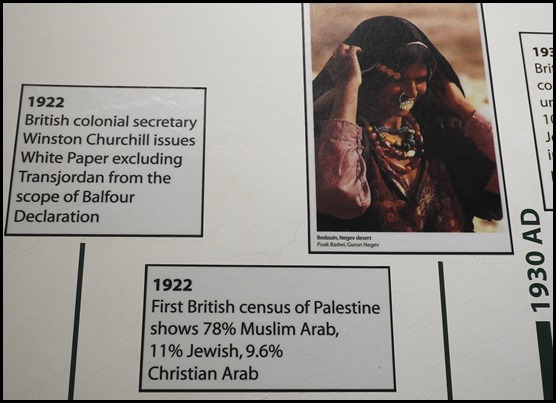 This wall information about
Palestine, cradle of different civilisations and monotheistic religions. At its
heart is Jerusalem (Al Quds), the third holiest city of Islam. This is the
location of the original qibla for Muslims, as well as being the site
of Al Aqsa Mosque and the Dome of the Rock.
Alongside a brief chronology of major
events in Palestine’s history are photographic glimpses into Palestinian arts,
crafts and heritage. Traditional hand embroideries, costumes and beaded
jewellery are among the many outstanding components of that nation’s culture and
lifestyle. This wall honours the Palestinian contribution and shares in its
people’s struggle to preserve their heritage and identity.
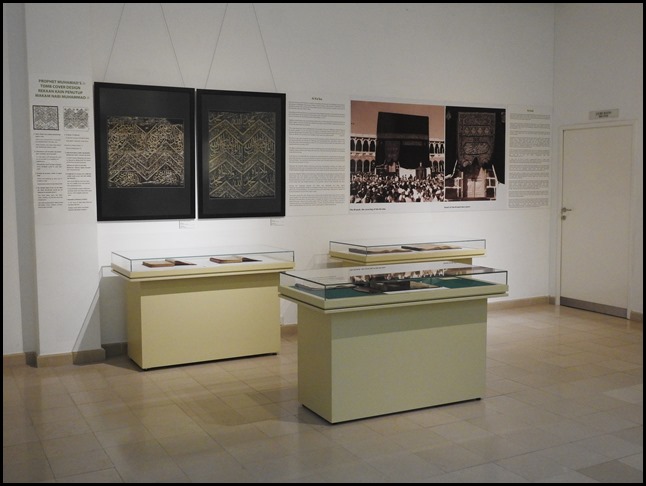 So much to read
and learn about.
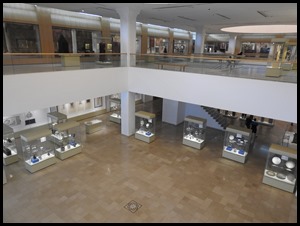 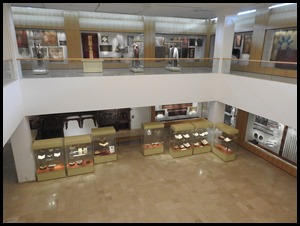 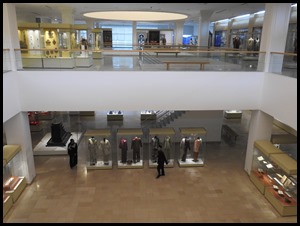 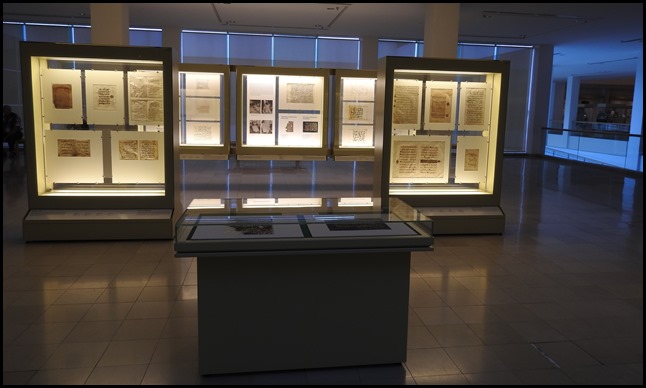 More panoramic
pictures.
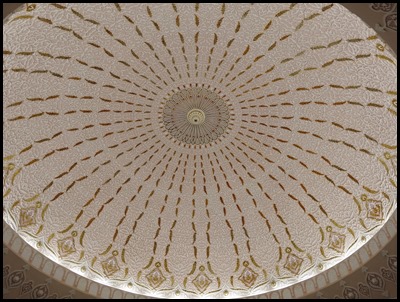 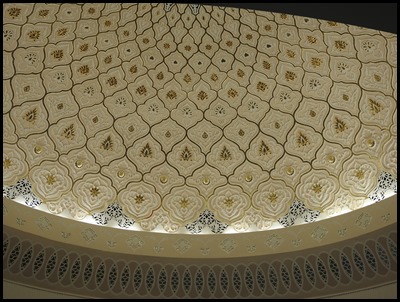     Each
area had its own beautiful domed ceiling.
   Each display case was
gorgeous.
   My
favourite dome.
ALL IN ALL
BEAUTIFUL AND INTERESTING
A SURPRISINGLY SPACIOUS, WELL LAID OUT
MUSEUM |

